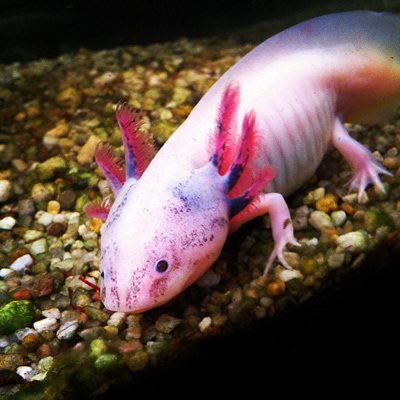By ELLIE O’BANION
Sheridan High School Student
 This column is brought to readers by Sheridan High School dual-credit program students and Human Services teacher Abby Williams.
This column is brought to readers by Sheridan High School dual-credit program students and Human Services teacher Abby Williams.
Axolotls are Mexican Amphibians, falling under the salamander category, and they live in two lakes, including Lake Xochimilco and Lake Chalco in Mexico.
The Axolotl is a species scientists are apprehensive about going extinct soon; they estimate that there are only about 50 to 1,000 left in the wild. That number is greatly decreasing and is too fast for humans to be sure that they can help stabilize their numbers.
They are one of the only animals who don’t grow out of their baby stages. From the baby stage, they still have their feathery gills, webbed feet, dorsal fin, and a tail. This is a stage in which nothing further progresses in the growing cycle, also known as neoteny.
Like other amphibians, Axolotls can lose a limb and be able to grow them back, which can take different amounts of time depending on what they lose. Most injuries take around 40 to 50 days to grow back.

Photo provided
Their scientific name is the Ambystoma Mexicanum; however, their normal name comes from a god known as Aztec, the god of fire and lightning. Aztec would also disguise himself as an amphibian, which is where the name corresponds to the Axolotls.
Axolotls were brought to Paris in 1864 to be bred and kept as pets for people. In the wild, they are a brown-tannish color but once they were bred for pets they mutated and now are mainly seen as a shade of pink. Many different places in the U.S. have banned owning an Axolotl as a pet, in fear of them escaping and breeding with other salamanders of a different species and being poached from the wild.
The Axolotl’s numbers are decreasing so fast due to the increase in population sizes in Mexico, the increase in tourism and residential housing, and the space they use to build the home of the species. Another factor behind the decrease in their population numbers includes the agricultural and industrial pollution in the lakes they live in. The introduction of Tilapia and other invasive species have caused a decrease in their population as they tend to hunt and eat newborn salamanders.
Scientists are trying to create a new chain of islands to help take out some of the pollution, and in turn, help the Axolotl as well as other animals. This chain of islands is made of water plants, logs, and mud.
Axolotls reach the reproduction stage at one year old, and males will perform a dance known as the “hula” for the female. The female will show she accepts him by nudging him with her nose. A female Axolotl can lay up to 1,000 eggs, with the average being approximately 300. They lay them on plants and rocks on the lake floor to keep them safe from predators. The eggs will take about two weeks to hatch and immediately are off learning how to survive without parental care.

